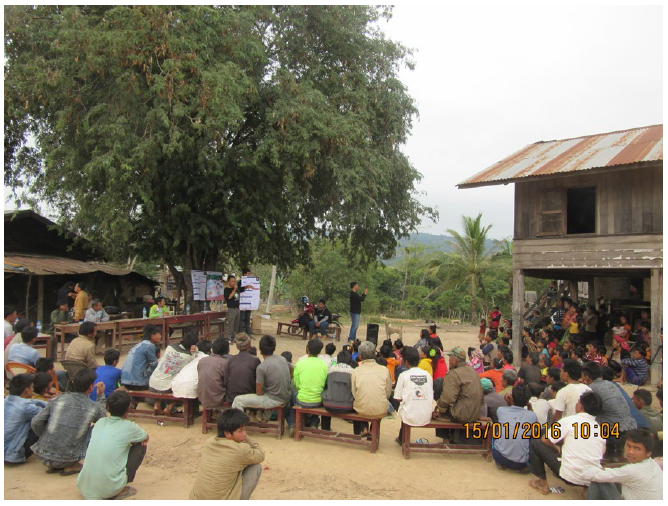
Image: A mass meeting in Tha Thay, Laos, explaining TME procedures using a poster (Adhikari et al. 2018)
This article draws on qualitative data to explore the factors that led to high population coverage (>87%) of mass drug administration (MDA) as part of targeted malaria elimination (TME)* in the Greater Mekong sub-region of South East Asia. TME encompasses a package of interventions including the strengthening of village malaria worker networks alongside MDA. Community engagement and education activities (including health education through theatre, posters, village meetings, and house-to-house visits) were undertaken to promote the uptake of MDA in target communities.
As a result of data collection through a range of qualitative methods (including observations, field notes, focus groups and semi-structured interviews), the article concludes that a combination of the following factors influenced participation in mass antimalarial administration:
- Community engagement to promote concept and rationale of MDA for asymptomatic malaria (in addition to baseline understandings of malaria as a health concern)
- Provision of free primary healthcare (as under normal circumstances poverty and distance affected access to healthcare)
- Familiarity with the rationale for blood testing and MDAs
- Partnering of research with local volunteers and authorities
- Building social relationships with community members that promoted trust
- Responsive approach to community engagement, whereby concerns were addressed promptly
*Targeted malaria elimination (TME) = “the presumptive treatment of an entire community to interrupt completely local malaria transmission” (Adhikari et al. 2017)
Click here to download the full PDF.

This work is licensed under a Creative Commons Attribution 4.0 International License.

Please Sign in (or Register) to view further.